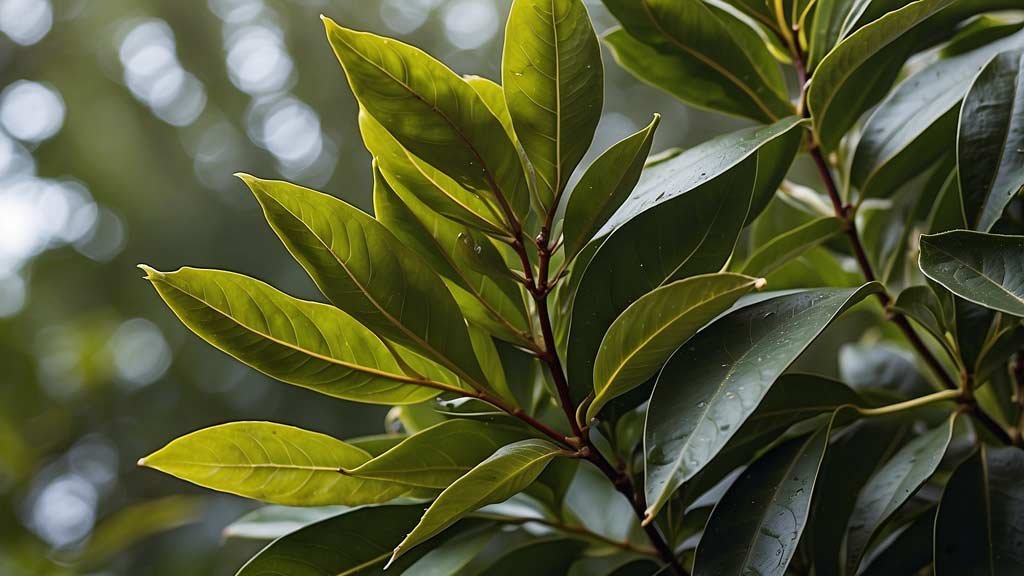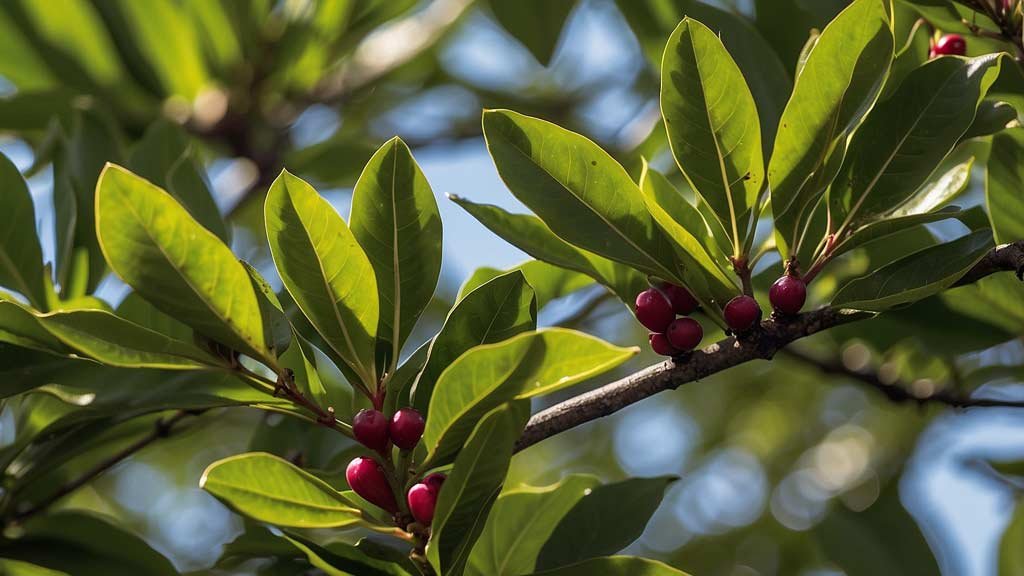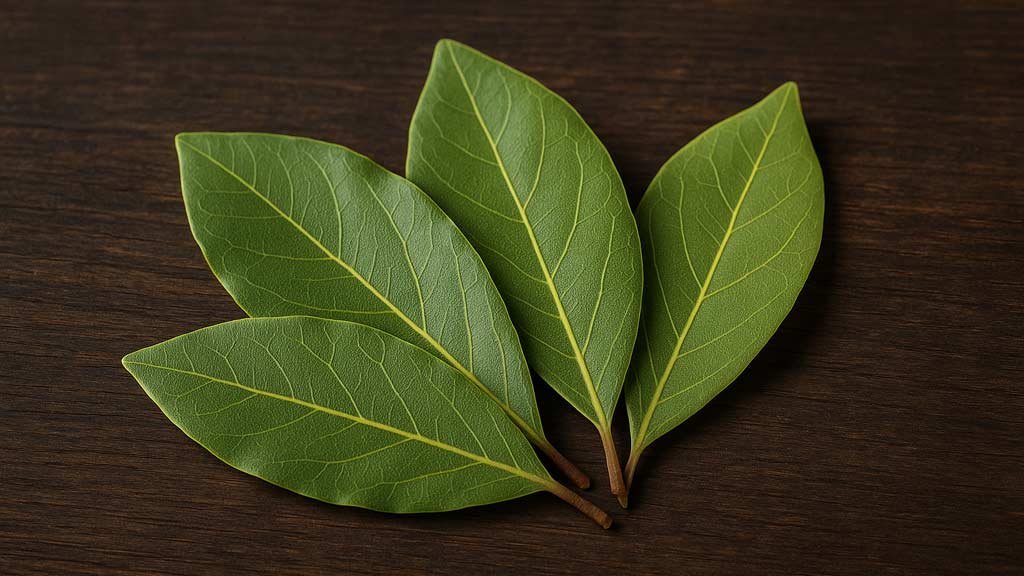More Than Just a Soup Leaf
Bay leaf. You’ve seen it floating in soups, stews, and slow-simmered sauces. Most people toss it in without thinking, then fish it out before serving. But here’s the thing: this unassuming, leathery green leaf—straight from the bay laurel tree (Laurus nobilis)—has a history that stretches back thousands of years. Ancient Greeks crowned victors with laurel wreaths. Romans burned it in sacred rituals. And traditional medicine systems from the Mediterranean to India have relied on bay leaf for digestion, infections, and even protection against the “evil eye.
The funny part? Most kitchens today treat bay leaf as a minor flavor booster, a background note. But when you dig deeper, you realize it’s more than culinary decoration—it’s a spice with real physiological effects, especially when it comes to the digestive system and fighting microbes. Let’s chew on that, shall we?
Table of Contents
The Plant Behind the Spice
Bay leaf comes from Laurus nobilis, a slow-growing evergreen tree native to the Mediterranean. Its leaves are glossy, oval, and stiff, about 2–4 inches long. If you crush a fresh leaf between your fingers, the scent bursts out: sharp, herbal, with a hint of eucalyptus and clove. That’s the essential oils speaking—cineole, eugenol, and pinene among them.
Worth noting: not all bay leaves are created equal. The true culinary bay is Laurus nobilis. Other plants, like the California bay (Umbellularia californica), have similar-looking leaves but an overpowering, almost camphor-like flavor that can make your stew taste like cleaning fluid if you’re not careful. Stick to the Mediterranean variety if you want balance and depth.
Bay Leaf in the Kitchen: Subtle but Crucial
Drop a leaf in broth, and you won’t shout, “Ah yes, the bay!” It’s not that kind of spice. Instead, bay leaf rounds out flavors, giving body to soups, beans, and braises. Imagine a jazz band: bay leaf isn’t the trumpet blasting a solo; it’s the upright bass keeping time in the background, making everything else sound fuller.
Some cooks swear that beans never digest well without bay. Others insist tomato sauce tastes flat without its quiet bitterness. I once cooked a lentil stew without bay leaf, just to see if it really mattered. The verdict? Bland, one-dimensional, almost hollow. Add a single leaf, and suddenly there’s warmth, cohesion, that invisible thread pulling everything together.
Traditional Medicine and Folklore
The Greeks associated laurel with Apollo, the god of healing and prophecy. Priests burned the leaves to induce visions. Romans saw laurel as a symbol of victory and immortality. In medieval Europe, people hung bay branches in homes to ward off lightning and evil spirits.
But folklore aside, bay leaf had—and still has—a place in traditional herbal medicine. In Ayurveda, it’s used to stoke digestion, reduce bloating, and improve circulation. In Mediterranean folk practices, bay leaves are brewed as tea for colds and coughs. Some even placed a leaf under their pillow to inspire vivid dreams.
Digestive Benefits of Bay Leaf
Here’s where things get interesting. Bay leaf isn’t just about taste. It contains volatile oils and compounds that directly influence the digestive process.
How It Works
- Stimulates gastric secretions: Cineole and eugenol encourage the stomach to produce enzymes, which helps break down food more efficiently.
- Reduces gas and bloating: Bay leaf tea or decoction has mild carminative properties, meaning it helps move gas along and prevents that uncomfortable, distended feeling.
- Supports fat metabolism: Some studies suggest bay leaf extracts may influence lipid breakdown, making heavy meals easier to handle.
Real-Life Example
Ever notice that bean-heavy dishes almost always include bay leaf? That’s not just for flavor. Beans contain oligosaccharides that ferment in the gut, causing gas. Adding bay leaf is thought to reduce this effect, whether by direct enzymatic influence or simply by tradition tested over centuries.

Antimicrobial and Antioxidant Power
Bay leaf doesn’t stop at digestion. The same compounds that give it aroma—cineole, linalool, eugenol—also pack antimicrobial punch. Modern lab studies have shown bay leaf extracts inhibit the growth of bacteria like Staphylococcus aureus and E. coli, and even some fungi such as Candida species.
Antioxidants are another piece of the puzzle. Flavonoids and phenolic compounds help neutralize free radicals, the unstable molecules that contribute to inflammation and cellular damage. In plain terms: bay leaf supports your system’s defense line, not just against germs but also against the slow burn of oxidative stress.
Other Health Uses Worth Mentioning
Bay leaf’s medicinal reach doesn’t stop at digestion and microbes. People have traditionally turned to it for:
- Respiratory relief: Steaming with bay leaves in hot water clears sinuses and soothes coughs.
- Blood sugar balance: Preliminary studies hint that bay leaf extracts may help regulate glucose and insulin sensitivity.
- Joint and muscle aches: Bay leaf-infused oil has been rubbed on sore spots for centuries. Its warming, mildly numbing effect is real.
- Stress relief: Burning a leaf in ritual or simply inhaling its aroma is said to calm the nerves, though science hasn’t quite pinned this one down.
Bay Leaf Tea: Old Remedy, Still Relevant
Bay leaf tea isn’t a trendy invention—it’s been brewed for centuries. The flavor? A little bitter, somewhat spicy, with hints of clove and eucalyptus. It’s not the kind of tea you sip absentmindedly—it commands attention.
How to Make It
- Boil 2–3 dried bay leaves in a cup and a half of water for about 10 minutes.
- Strain and drink warm.
- Optionally, add a touch of honey or a cinnamon stick for balance.
Drink it after a heavy meal, and you may notice less sluggishness, less bloat. Some people even take it before bed to support overnight digestion.
Safety and Precautions
Like all herbs, bay leaf deserves respect. Whole dried leaves are fine for cooking, but don’t chew and swallow them—their tough texture makes them difficult to digest, and edges can be sharp. Stick to removing the leaf after cooking or using powders and extracts designed for consumption.
Bay leaf tea and culinary use are generally safe in moderation, but concentrated essential oil is a different story. It’s potent, and applying it directly to skin or ingesting it in pure form can be toxic. Pregnant or breastfeeding individuals should consult a professional before using bay leaf medicinally.
Growing and Harvesting Bay Laurel
Bay laurel thrives in warm, Mediterranean climates, but it adapts well to pots if you live in cooler regions. Keep it in a sunny spot, prune it to encourage bushy growth, and you’ll have a lifetime supply of fresh bay leaves.
Fresh leaves are more pungent, but most cooks prefer dried. Drying mellows the sharpness and deepens the flavor. Just hang sprigs upside down in a cool, airy place until the leaves crisp. Store them in a jar, away from light and heat. They’ll keep for a year or two, though the aroma fades with time.

The Quiet Power of Bay Leaf
Bay leaf may never steal the spotlight the way garlic, basil, or chili do. It’s subtle, almost shy. But its influence runs deep—on flavor, on digestion, on microbial balance. Ancient civilizations knew it. Folk medicine never forgot it. Modern science is catching up.
So the next time you toss a leaf into your soup, pause for a second. Remember that you’re adding more than seasoning. You’re participating in a tradition that stretches back millennia, one that blends food, medicine, and ritual in a single green leaf.
And maybe—just maybe—your stomach will thank you.
Article Sources
At AncientHerbsWisdom, our content relies on reputable sources, including peer-reviewed studies, to substantiate the information presented in our articles. Our primary objective is to ensure our content is thoroughly fact-checked, maintaining a commitment to accuracy, reliability, and trustworthiness.
- Alonso, J., & Desmarchelier, C. (2015). Medicinal plants in Latin America and the Caribbean: Traditional uses, safety, and efficacy. CRC Press.
- Bozin, B., Mimica-Dukic, N., Simin, N., & Anackov, G. (2006). Characterization of the volatile composition of essential oils of some Lamiaceae spices and the antimicrobial and antioxidant activities of the entire oils. Journal of Agricultural and Food Chemistry, 54(5), 1822–1828. https://doi.org/10.1021/jf051922u
- de Marino, S., Borbone, N., Zollo, F., Ianaro, A., Di Meglio, P., Iorizzi, M., & De Feo, V. (2004). Bioactive constituents of Laurus nobilis leaves: Sequential extracts with increasing polarity. Journal of Natural Products, 67(5), 835–838. https://doi.org/10.1021/np030419n
- Gülçin, İ., Sat, İ. G., Beydemir, Ş., Elmastaş, M., & Küfrevioğlu, Ö. İ. (2004). Comparison of antioxidant activity of clove (Eugenia caryophylata Thunb) buds and Laurus nobilis L. Journal of Agricultural and Food Chemistry, 52(9), 2162–2169. https://doi.org/10.1021/jf035330y
- Khan, A., Zaman, G., & Anderson, R. A. (2009). Bay leaves improve glucose and lipid profile of people with type 2 diabetes. Journal of Clinical Biochemistry and Nutrition, 44(1), 52–56. https://doi.org/10.3164/jcbn.08-183
- Marino, M., Bersani, C., & Comi, G. (2001). Antimicrobial activity of the essential oils of Thymus vulgaris L. measured using a bioimpedometric method. Journal of Food Protection, 64(1), 37–40. https://doi.org/10.4315/0362-028X-64.1.37
- NCCIH. (2020). Aromatherapy and essential oils. National Center for Complementary and Integrative Health. https://www.nccih.nih.gov/health/aromatherapy
- Pandey, A. K., & Singh, P. (2011). Antimicrobial activity of essential oils of Cinnamomum, Syzygium, and Laurus species. Medicinal & Aromatic Plants, 1(1), 101. https://doi.org/10.4172/2167-0412.1000101

